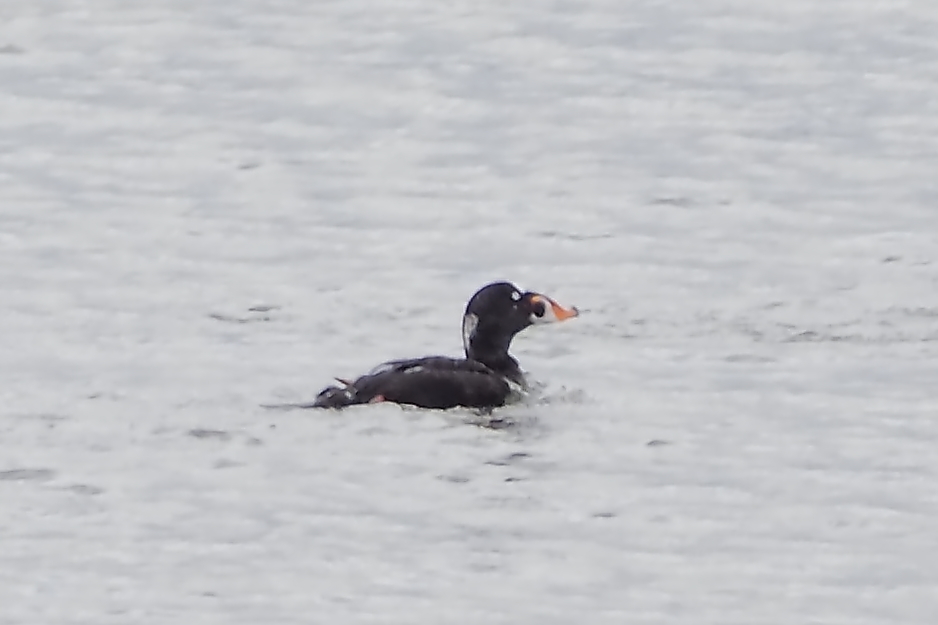
A pattern seems to be developing this summer, of birds with really striking faces. First there was the Lesser Ground-Cuckoo, a species I had long wanted to see. The perfect views it gave us made the wait well worthwhile. I wrote about this encounter a month ago.
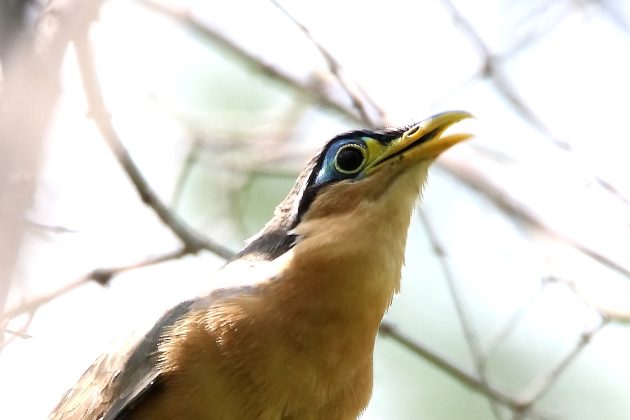
The following week, I finally got some great photos of a male Ruddy Duck with its fantastic reproductive blue bill. I had already had dozens of encounters with the species, a few with males in their summer finery. But never before had I managed images that left me fully satisfied.
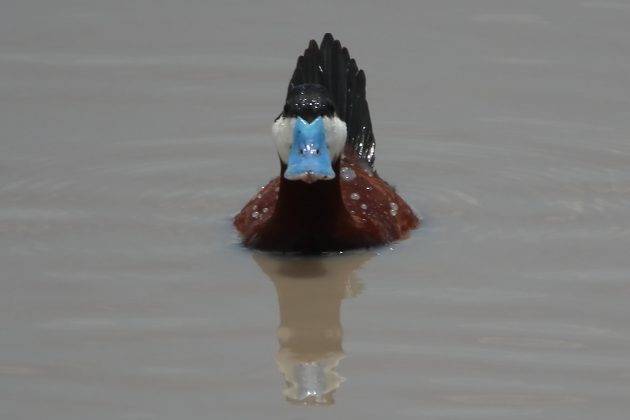
And now, just last week, I got to see another duck with a fantastic face. My wife and I had to make a lightning logistics trip to California, and where the seafaring Surf Scoter is quite common. I had seen these ducks on two previous trips, but both times, they were riding the, you guessed it, surf. The constant movement of the waves, and harsh glare reflected off the water, meant that my photos were barely good enough for ID purposes. Plus, I only seemed to see them from behind.
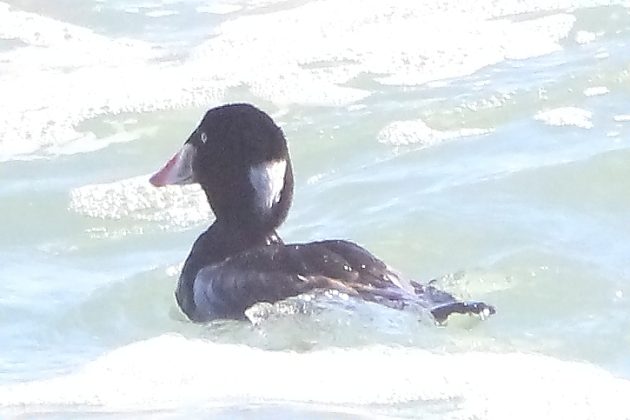
But this trip, even though I had even less time to go birding, my outing was to the quiet waters of San Francisco Bay. Specifically, I went to an area known as Redwood Shores, which showed some promise on the eBird map.
Radio Road, as it is known, did not actually seem to me to be such a birdy place. But I’m still pretty new at eBird-ing California, and I ended the morning with a surprising 10 new species for the state… Although none of them were true lifers. Some seem pretty unexplainable to me. Really? I had not yet listed any Californian Rock Pigeons or House Finches? Others, such as a single Black-necked Stilt, Snowy Egrets, Black-crowned Herons, and Black Phoebes, fall within a range of moderate interest. A distant Osprey, carrying either nesting material or a very long snake, was a bit of a thrill. As were early-arriving Forster’s Terns and a Willet, and a group of White-throated Swifts wheeling overhead. (Although I can see White-throated Swifts any day of the year in downtown Morelia.)
But the main attraction for this trip was a single Surf Scoter, luckily, a male. Since the Bay has very little in waves, and this duck was very patiently working his way along the shore, I finally got a really good look at its face. And what a face it is!
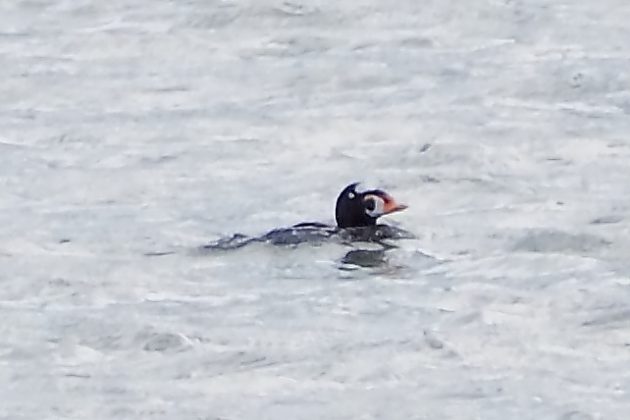
My photos would have been better if I had my heavy “home” camera, with its 600 mm lens. My used mirrorless camera can probably take photos of similar quality, but it is one complicated piece of machinery. I still have much to learn about its use. But these photos are a real improvements on my previous attempts, and I feel lucky to have them.
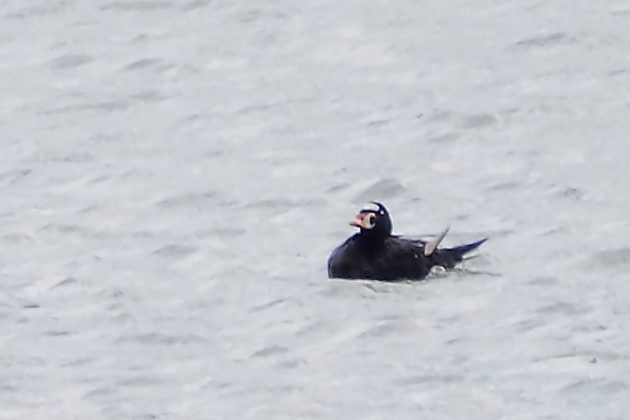
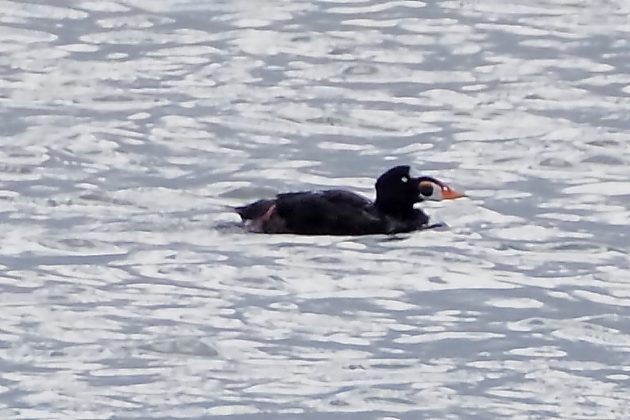
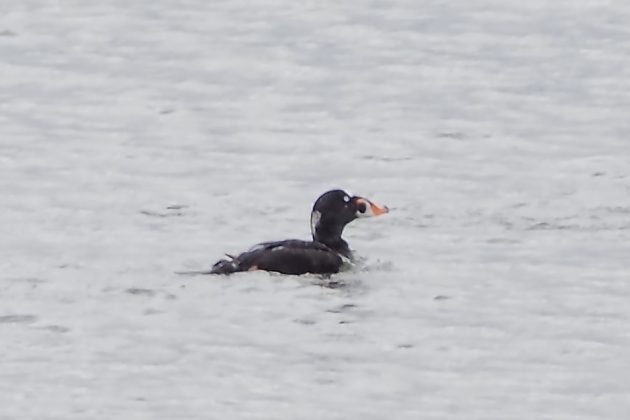
Since it does not really merit a separate post, I’ll finish off here with an encounter two days later, at Moss Beach, on the Pacific side of the San Francisco Peninsula. Here my wife and I came across 18 Black-bellied Plovers, all chilling (pun intended) on the rocky beach. I consider myself lucky if I see one or two of these plovers each year in Mexico. So for me it was exciting to see a whole crowd of them.
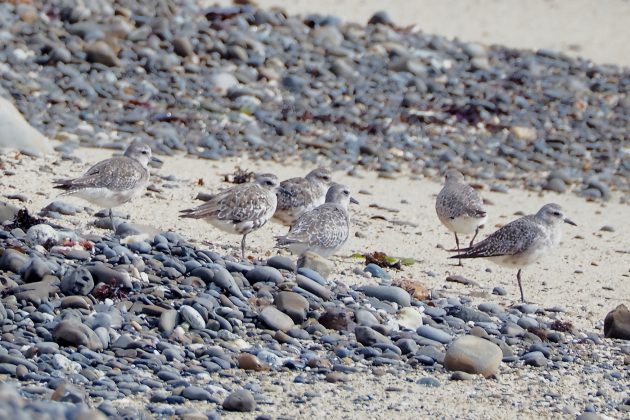
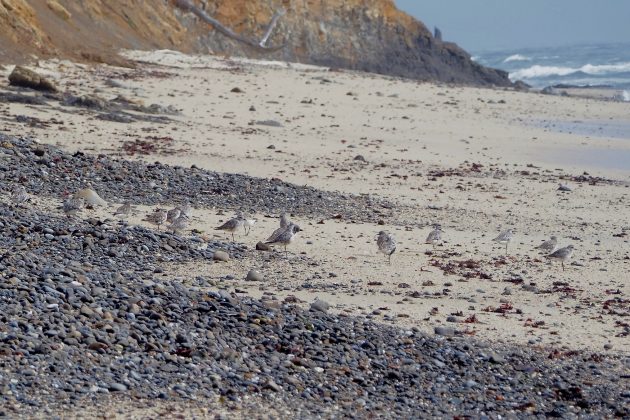
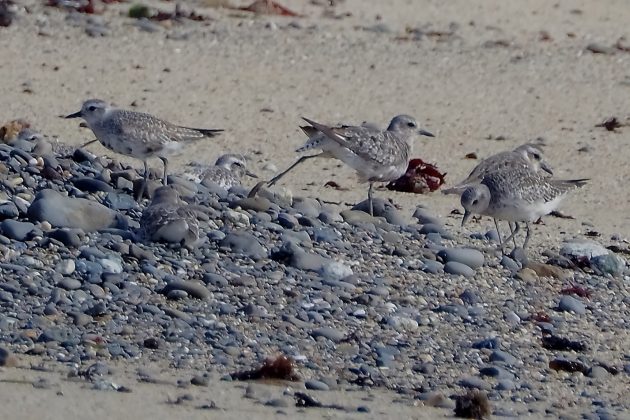
I might have gone closer to the plovers, if this weren’t a Harbor Seal Resting Area. Which they did, shortly before we left.
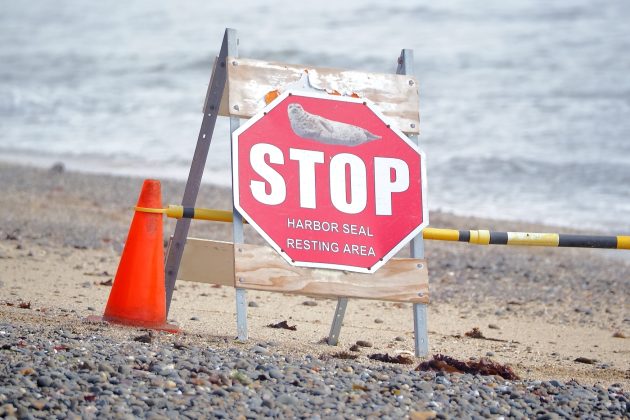








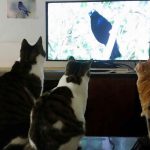




Lots of pretty faces indeed!
In the winter, we get Black, Surf and White-winged Scoters along the Toronto waterfront. Ruddy Ducks show up in the spring. They are all very nice to see. Glad you had such great views.